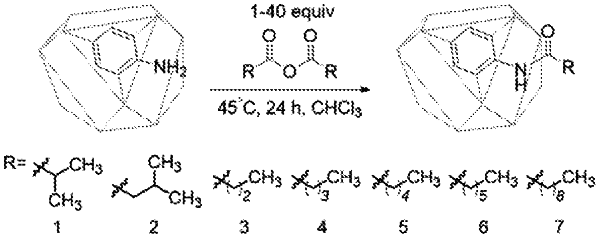| CPC B01J 31/1691 (2013.01) [B01J 31/2239 (2013.01); D06M 16/00 (2013.01); B01J 2531/0219 (2013.01); B01J 2531/16 (2013.01)] | 4 Claims |

|
1. A method of forming a modified textile, the method comprising:
carboxymethylation of a surface of a textile;
layer-by-layer growth of a copper tricarboxylate metal-organic framework film on the surface of the carboxymethylated surface;
selecting an anhydride that will confer hydrophobicity to the copper tricarboxylate metal-organic framework film, wherein the anhydride is valeric anhydride; and
forming a modified tricarboxylate metal-organic framework film by exposing the copper tricarboxylate metal-organic framework film to a determined effective amount of the valeric anhydride to produce a hydrophobic textile having a determined characteristic, wherein the determined characteristic is one of water contact angle, water stability, and degradation rate of the tricarboxylate metal-organic framework.
|